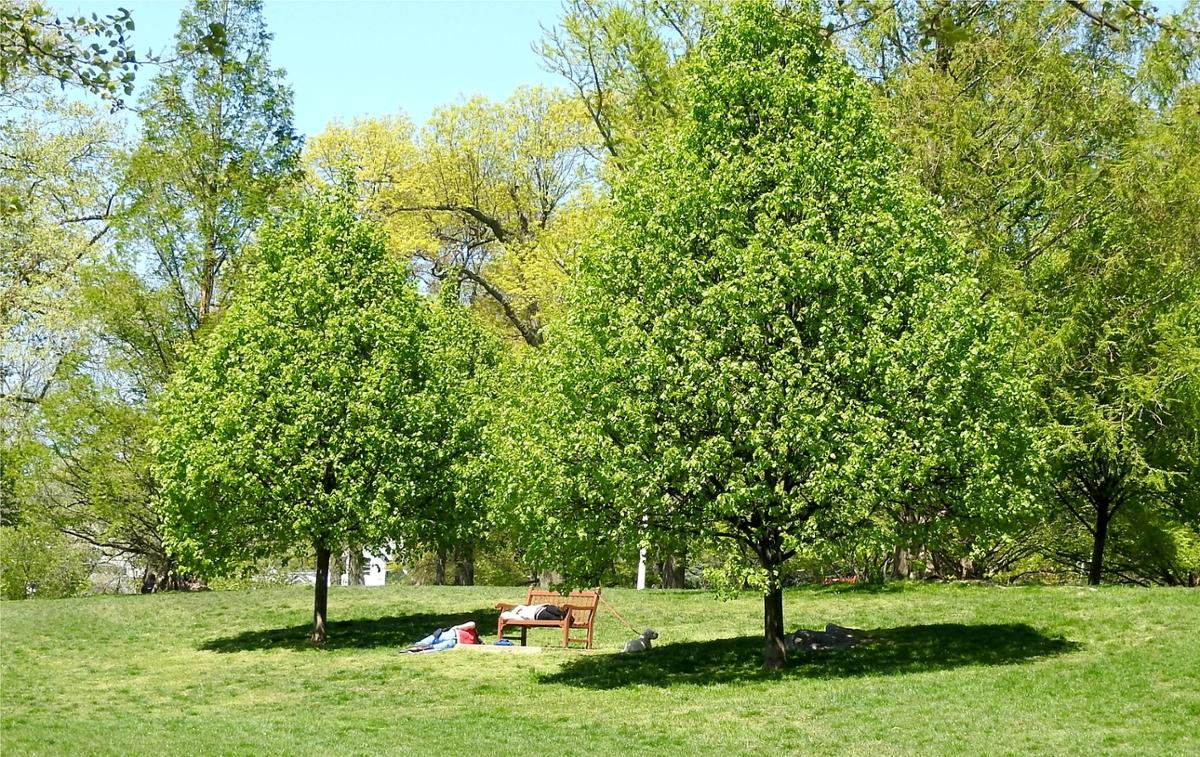When we hear a report that the temperature outside is, say, 70 degrees, we're usually hearing a measurement made with a thermometer at least six feet off the ground. But there can be big variations in temperature closer to the ground. On a sunny day, the temperature at ankle level may be five or ten degrees warmer than at eye level. A cool day for us can be a warm day for rabbits and squirrels.
On a sunny day, sunshine warms the ground and warms the air. But sunshine warms the ground better than it warms the air. Soil and green plants absorb sunlight and convert it to heat better than air does. So a field of grass and clover and dandelions feels warm to the touch on a cool sunny afternoon.
The warm ground heats the air a few inches above the ground. That surface air doesn't move much -- it's not affected by breezes -- so the surface air gets warm and stays warm.
Where there's vegetation, the level of warmest temperature tends to follow the height of the leaves. The warmest temperature over a field of clover may be about half an inch above the ground; in a field of mature corn, four or five feet up; in a forest of oaks and maples, the hottest place is at the top of the canopy of leaves -- maybe a hundred feet up.
This principle applies even if the vegetation is plastic. At a daytime major-league baseball game the temperature might be 90 in the stands, and 110 on the field, partly because artificial grass is so good at changing sunlight to heat.









